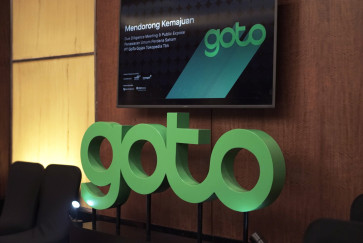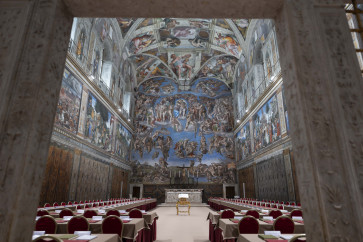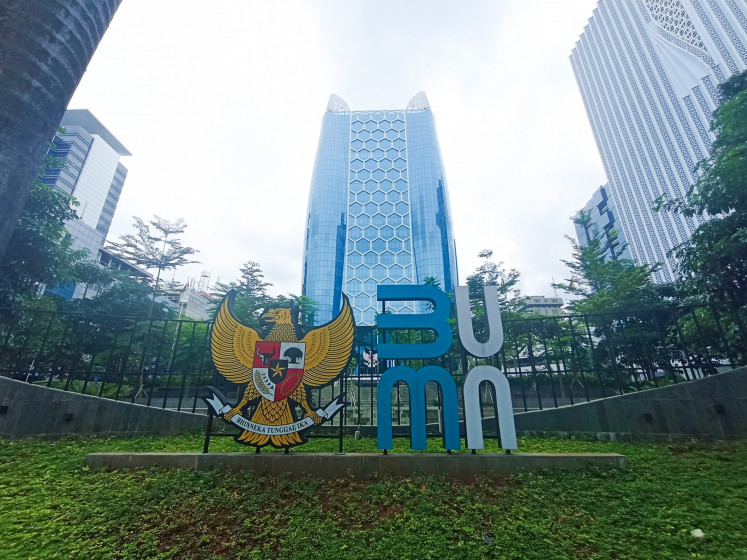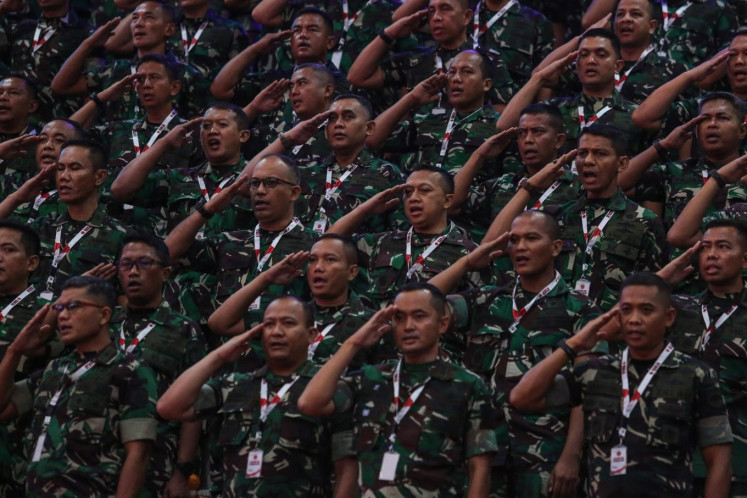Islamic 'sinetron' more down to earth, closer to viewers
Tukang Bubur Naik Haji on RCTI
Change text size
Gift Premium Articles
to Anyone
 Tukang Bubur Naik Haji on RCTI. (Nova/Adri) (Nova/Adri)
Tukang Bubur Naik Haji on RCTI. (Nova/Adri) (Nova/Adri)
Tukang Bubur Naik Haji on RCTI. (Nova/Adri)
With more than 13 television stations that air nationally, the small screen has become the basic leisure-time activity of tens of millions of viewers.
While a wider range of options for entertainment ' from cinema to pay TV ' are available for middle- and upper-income households in urban areas, many viewers are left with the national and some local television stations to pass their spare time.
Soap operas, locally known as sinetron, are always a favorite, in spite of the cliché story lines and packaging. Some popular series have even become export items for MNC network, which also has pay TV channels in Singapore, Malaysia and Brunei.
As something that has endured for 15 years, Islamic sinetron have evolved from something that offered dreams ' an urban portrait of luxury and beautiful people ' to down-to-earth sketches of daily lives full of comedic moments and not-so-pretty actors.
Starting in 2005, Islamic sinetron took on several incarnations. The first one was when Rahasia Ilahi (God's Secrets) was aired by TPI (now MNC TV). It was an anthology series which claimed its plots were all based on true stories. The series presented gory scenes and explicit violence, with its characters depicted in black-or-white morality. Adversity was seen as punishment from God for the bad deeds of the characters.
Rahasia Ilahi, however, caught the attention of the viewers and inspired similar series with the word 'Ilahi' (God) in their series titles.
Another shape was taken by Kiamat Sudah Dekat (Doomsday is Near). Aired by SCTV, the series told a love story but not as a main thread; it also steered away from family conflicts and put forth denser religious teachings. It showed characters from daily life and of the middle and lower classes ' unlike the glitzy lives in earlier sinetron.
The success of proletarian stories and characters was later emulated by other makers resulting in sinetron such as Para Pencari Tuhan (God Seekers), Islam KTP (Superficial Muslims), and Pesantren Rock n Roll (Islamic Boarding School Rock n Roll).
Aired by SCTV from 2010 to 2011, Islam KTP picked a distinct tone, other than just portraying average people. It brought up one character Ustad Ali, a cleric, trying to change the wrong ways of the people around him not through punishment but rather through affable approach.
The criticisms of superficially pious characters have been taken further in Tukang Bubur Naik Haji (Porridge Seller Goes on the Haj) with the presence of religious, and socially regarded men who are nonetheless envious and worldly. There are also portraits of a confused society, easily disturbed by rumors and prejudice.
It has also triggered similar series including RCTI's Anak-anak Manusia (Children of Man), a portrait of a family-run Islamic boarding school that also brings in many flawed characters.
There have been protests at the negative portrayals of such characters, especially those who have gone on the haj. Some have even filed complaints to the Indonesian Broadcasting Commission (KPI).
Manoj Punjabi, president director of MD Entertainment, said that sinetron were the result of both audience demand and industry direction.
'If we make something that audience can't relate to, they won't watch it. We adapt to the people,' said Manoj, whose production house was responsible for the successful Cinta Fitri (Fitri's Love).
He said that the most crucial element in a religious sinetron was the script.
'Stories are easy to make, but the script, the dialogue is hard, because it sets the mood of the sinetron. We use scriptwriters who really understand about Islam and the audience, those are hard to find,' Manoj said.
He predicted that religious sinetron would keep going strong for at least another five years.
'We make the trends. It's not easy; we have to be consistent and persistent. We could make 10, 20 shows before being able to put on one successful show. Once we succeed, others will follow and the trend will roll,' he said.
Ilya Sunarwinadi, a communication expert from the University of Indonesia, said that the sinetron ' in all its forms ' had become trapped in profit-orientation.
'We see the repetition of similar, tired patterns in stories and packages. Sinetron are being more commercialized, airing every day for ever longer hours,' said Ilya.
She said only a very few sinetron tried to be different, but they were usually short-lived.
'As a result, the free-to-air TV audience does not have many options ' if there have any. They don't have any alternative but to watch the shows, which later translate into high ratings,' Ilya said.
She said that some bored viewers, especially the younger generation, had turned to other options like cable TV, which offers broader choices, or other entertainment media.
'But how many Indonesians have access to these? The rest simply watch whatever's on TV,' she said.









